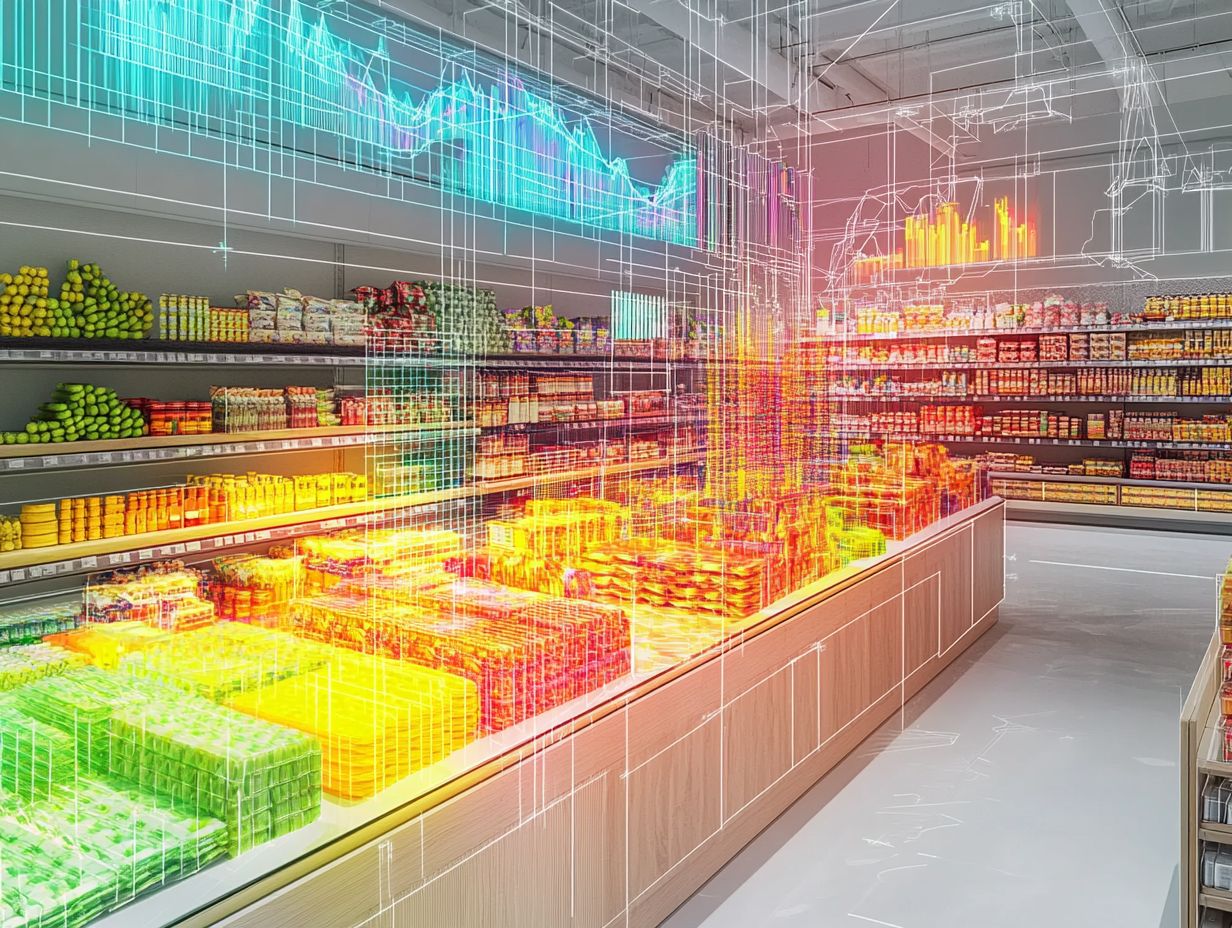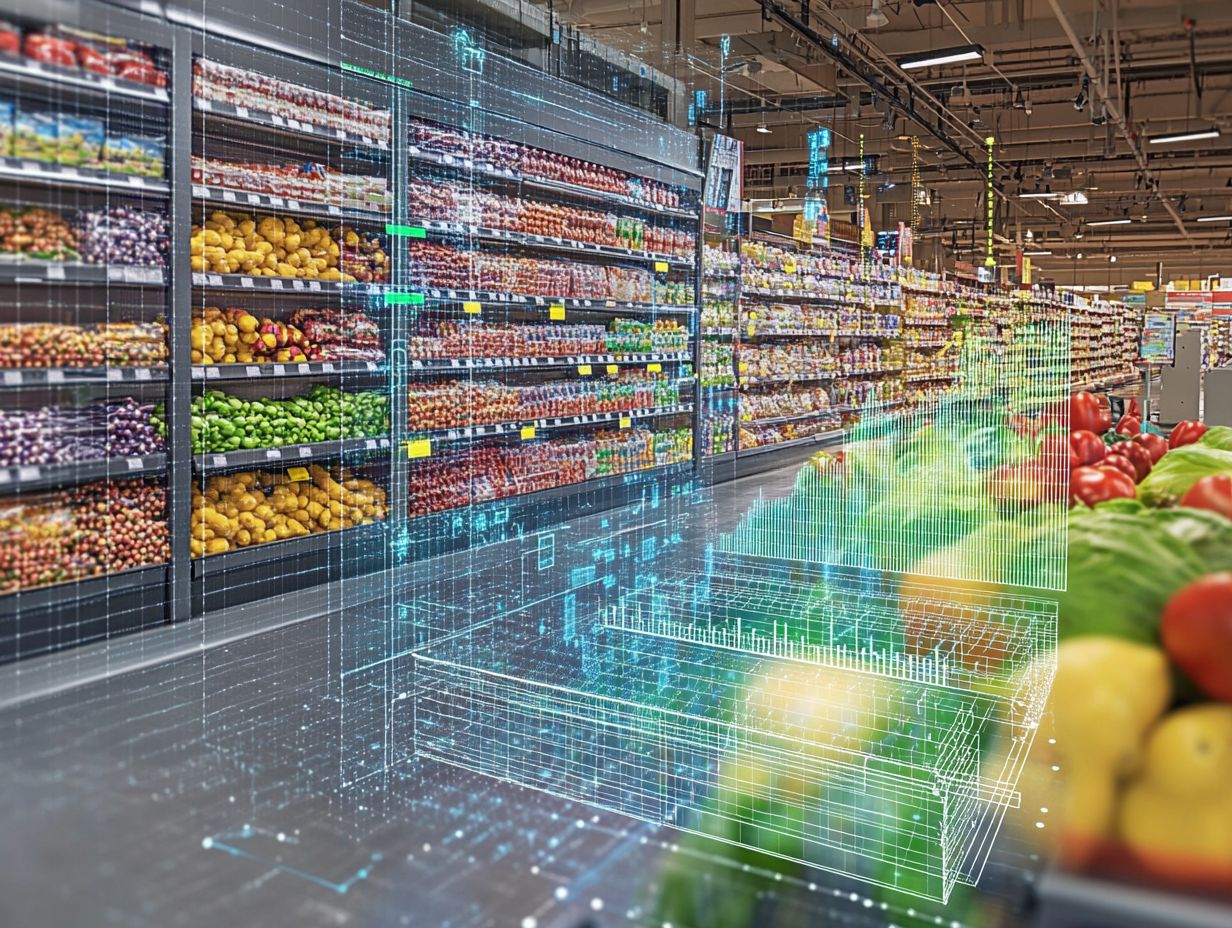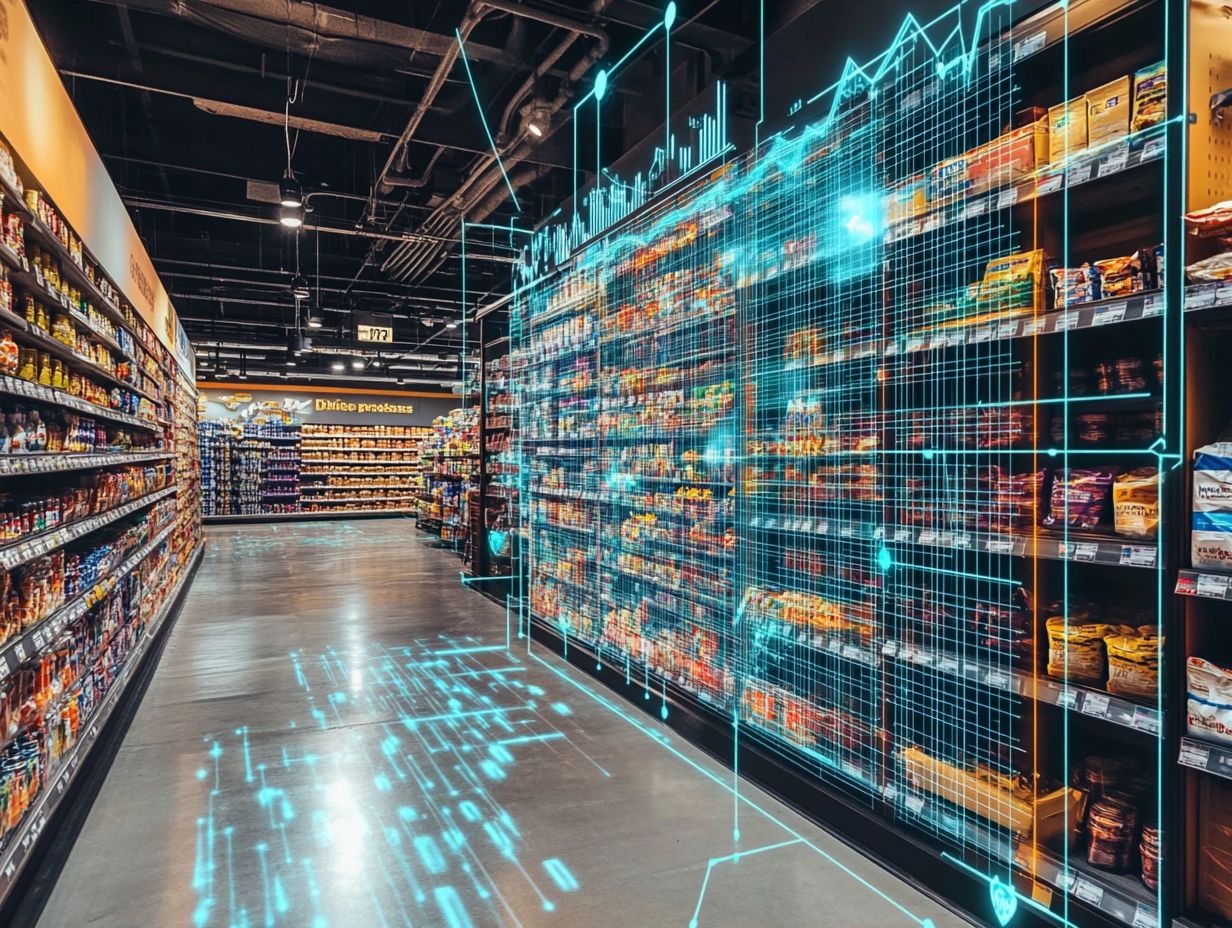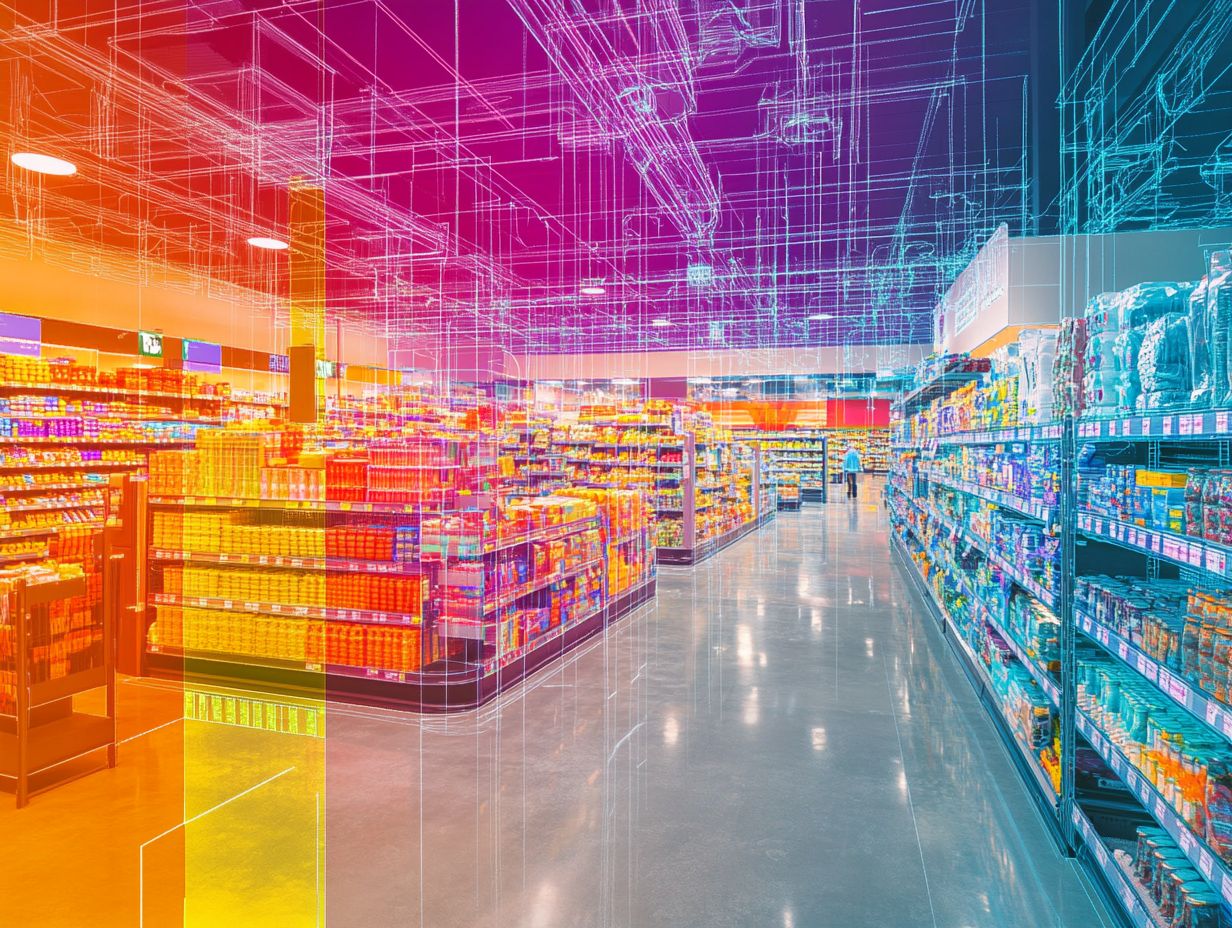Grocery stores are increasingly utilizing location analytics to enhance their operations in today’s competitive retail landscape. This technology not only improves inventory management and customer insights but also facilitates better store layouts and staffing efficiency. Understanding how to implement location analytics can yield significant benefits, as demonstrated by numerous success stories. However, it is essential to consider the challenges and limitations associated with this technology, including privacy concerns and technical obstacles. This article explores how location analytics can optimize grocery store operations.
Definition and Importance in Business Operations

Location analytics involves the analysis of geolocation data to uncover insights that can significantly enhance grocery store operations and improve supply chain management. This type of analysis is essential for business operations, as it enables organizations to optimize their strategies based on real-time data, predictive analytics, and customer demographics, ultimately boosting sales through knowledge-based decision making.
Advanced data analysis provides businesses with valuable insights into consumer behavior, foot traffic, and market trends, resulting in improved operational efficiency, enhanced competitive analysis, and increased profitability.
Benefits of Using Location Analytics in Grocery Stores
Location analytics offers several advantages for grocery stores, including enhanced operational strategies and improved business performance.
By utilizing location analytics, grocery stores can effectively manage inventory, optimize store layout, and boost sales performance, gaining insights into customer behavior, all of which contribute to data-driven decision-making and sales optimization.
Additionally, location analytics allows grocery retailers to analyze consumer behavior, optimize store layouts, and tailor marketing strategies to better align with the preferences of their target audience.
Improved Inventory Management and Customer Insights
The two primary benefits of using location analytics in grocery stores are improved inventory management and enhanced customer insights. By utilizing data visualization tools, retailers can forecast sales and gain valuable insights into shopper behavior and demographic analysis, which enables them to manage inventory levels more effectively to meet customer demand.
This approach not only reduces inventory turnover but also ensures that products are in stock, aligning with customer preferences and needs. Tools such as heatmaps and geospatial graphs provide rich visual representations of purchasing trends, product placement, and store traffic analysis, allowing grocery retailers to identify high-performing areas and optimize shelf organization.
For instance, by analyzing location data alongside seasonal trends, retailers can enhance their sales forecasting capabilities, thereby better predicting fluctuations in sales and adjusting their inventory accordingly.
Additionally, dashboards that monitor real-time inventory levels against sales velocity enable grocery stores to quickly respond to changes in customer demand, ensuring timely restocking while minimizing waste and maximizing profit margins.
Optimized Store Layout and Staffing

An optimized store layout and effective staffing are essential components of a successful grocery business, making location analytics crucial.
By tracking foot traffic patterns through heatmaps and mobile tracking, retailers can design store layouts that enhance the customer journey and improve shopping experiences. This information can also be utilized to optimize staffing levels, ensuring that there are enough employees during peak shopping times to meet customer demands without overstaffing, which could negatively impact operational KPIs.
Location analytics provides a more precise understanding of customer movements within the store, highlighting sections that experience the most foot traffic and identifying areas prone to bottlenecks, enhancing the store experience. With these insights, retailers can adjust product placements, zone performance, and promotional displays, removing obstacles and directing customers towards high-margin areas to increase sales through better store design.
Heatmaps assist decision-makers in identifying peak shopping times and patterns, enabling better staff allocation not only during busy periods but also to maintain service levels during slower times, improving overall service optimization.
Overall, the combination of location data can significantly enhance operational efficiencies and contribute to a better shopping experience for consumers.
How to Implement Location Analytics in Grocery Stores
Implementing location analytics in grocery stores is a systematic process that starts with effective data collection and analysis methods.
The adoption of advanced retail technology strategies by grocery retailers facilitates the seamless collection of geolocation data, which enables better analysis and provides valuable insights into consumer behavior, market trends, and operational metrics.
Additionally, the implementation of location analytics necessitates the integration of these analytics with existing systems to ensure that the collected data can be utilized effectively to enhance operational efficiency and drive sales performance.
Data Collection and Analysis Methods
Data collection and analysis methods are crucial for the effective implementation of location analytics in grocery stores. By utilizing real-time analytics, geographic information systems (GIS), and geographic data collection, grocery stores can gain valuable consumer insights that enhance their strategic approaches and market segmentation. Robust data mining techniques help grocery stores understand shopping patterns, improve customer segmentation, and drive sales through targeted marketing and location-based marketing.
Methods of data collection and analysis include:
- Customer relationship management systems
- Point-of-sale data
- Loyalty programs
All of which enable grocery stores to gather information for deeper consumer insights. Geographic information systems (GIS) allow grocery stores to visualize geographic trends, conduct spatial analysis, and identify areas of high demand. Additionally, real-time analytics enable grocery stores to respond swiftly to consumer needs and market changes. These methods not only enhance operational efficiency but also provide grocery stores with a better understanding of their customers.
Integration with Existing Systems

Integration with existing systems is a crucial aspect of location analytics in grocery stores. By incorporating data from these systems, retailers can enhance their operational efficiency, leverage business intelligence tools, and improve customer satisfaction through data-driven decision-making.
When location analytics is integrated with inventory management systems, sales channels, and customer relationship management systems, it can improve store performance metrics, zone analysis, and optimize grocery store operations. This integration streamlines inventory processes and enables grocery stores to forecast customer demand based on location and shopping behavior data.
By analyzing foot traffic trends in relation to product offerings and sales data, retailers can optimize product placement, manage inventory levels, minimize waste, and conduct profitability analysis. Enhanced data visualization tools provide insights that reveal peak shopping times and facilitate targeted promotions, ultimately increasing customer engagement and customer loyalty.
In summary, integrating location analytics with existing systems not only enhances decision-making but also plays a vital role in improving customer satisfaction and loyalty.
Case Studies and Success Stories
Case studies and success stories serve as valuable sources of information, offering real-world evidence of the impact of location analytics in grocery stores.
By examining these case studies, we can understand how grocery stores have implemented location analytics strategies to enhance their performance and operational efficiency. The effects of location analytics are evident in numerous successful case studies, many of which are readily available online.
Grocery stores that have shared their success stories regarding location analytics provide crucial insights for other grocery stores looking to improve their business processes.
Real-world Examples of Grocery Stores Using Location Analytics
Real-world examples of grocery stores utilizing location analytics demonstrate the significant benefits that can be achieved through this type of analysis, including enhanced store clustering and customer feedback integration. Retailers that implement location-based marketing strategies and retail analytics report improved sales performance and enhanced customer engagement. These case studies illustrate how location analytics can provide data-driven insights, operational analytics, and location intelligence that inform retail decisions and increase overall store productivity.
One notable example is the supermarket chain Kroger. Various success stories have emerged from location analytics case studies, showing that retailers who can identify customer behaviors within their stores through geospatial data and location profiling often achieve higher sales or greater efficiency in their sales processes.
For instance, after analyzing customer foot traffic and transaction data, Walmart repositioned certain products closer to the checkout counters, resulting in a 20% increase in impulse purchases. Similarly, Kroger observed customer movement patterns and relocated their salad dressing aisle to a more frequented area of the store, leading to a 15% sales increase.
By reducing the time customers spend searching for products through improved store optimization and checkout optimization, stores benefit both shoppers, who prefer to spend less time in-store, and retailers, who can increase the average basket size without expanding their store’s square footage. Along with boosting in-store sales, retailers that employ location analytics and sales mapping to tailor promotional campaigns for specific neighborhoods also see sales growth.
For example, grocery retailer Sobeys increased coupon redemption rates for a promotional campaign by 30% through the use of geospatial data analytics. This indicates that retailers leveraging location analytics to enhance in-store efficiency and refine geo-targeted advertising can significantly boost customer engagement and revenue. Such strategic use of location analytics creates a win-win situation for both customers and grocery stores.
Furthermore, location analytics have improved the supply chains of grocery stores. A smaller grocery chain in Australia, Foodland, utilized location analytics to determine the optimal placement of delivery hubs or warehouses for their distribution centers. Following a comprehensive geospatial data analysis, it was concluded that three distribution centers would be ideal, minimizing average travel time and delivery costs without necessitating additional investments in hubs.
Challenges and Limitations of Location Analytics in Grocery Stores

The challenges and limitations of location analytics in grocery stores encompass privacy concerns related to consumer data and technical difficulties in data management. These issues can hinder the effective use of location analytics.
However, they are crucial for retailers to comprehend in order to implement location analytics in ways that are compliant and do not undermine consumer trust.
Privacy Concerns and Data Management
Privacy concerns and data management practices present significant challenges that grocery stores must confront when implementing location analytics. As scrutiny on the collection and use of consumer data increases, retailers must ensure that their data management strategies comply with regulatory standards and prioritize data security.
Addressing these privacy concerns is crucial for maintaining customer trust while capitalizing on the benefits of location analytics. The widespread use of technologies that track customer movements within stores raises important questions regarding consent and data ownership.
Retailers need to navigate complex regulations, such as GDPR and CCPA, which impose strict guidelines on data collection, usage, and sharing. Ensuring robust data protection measures not only mitigates legal risks but also fosters transparency, allowing customers to feel more secure about how their information is managed.
By prioritizing ethical data practices, grocery stores can leverage the power of location analytics while safeguarding consumer privacy, ultimately leading to a more positive shopping experience and greater customer loyalty.
Cost and Technical Challenges
Cost and technical challenges represent significant barriers to the successful implementation of location analytics in grocery stores. High expenses associated with technology adoption and the technical complexities of integrating new systems with existing infrastructure can prevent retailers from fully harnessing the benefits of location analytics, ultimately impacting their operational efficiency. To overcome these challenges, strategic planning and investment are essential.
Phased Implementation:
Grocery retailers should prioritize phased implementation strategies, which allow for a gradual rollout of updates to existing technologies. This approach ensures that new tools can be integrated without disrupting daily operations and maximizes the utilization of current technologies before they become obsolete.
Employee Training:
Training employees is crucial to ensure that staff members are equipped with the knowledge and skills necessary to use new analytics tools effectively.
Technology Provider Partnerships:
Collaborating with technology providers can help reduce the costs associated with utilizing location analytics tools. These providers can offer tailored solutions optimized for specific needs, facilitating a smoother transition to data-driven decision-making.






